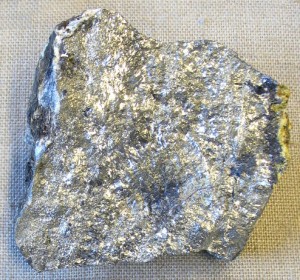
What are amphoteric and amphoterism? The word amphoteric means “both.” A metal or metalloid that displays amphoterism forms two types of oxides and hydroxides. This suggests they are special because they are able to react chemically as both acids and as bases.
One amphoteric metal is aluminum. Aluminum hydroxide, Al(OH)₃, reacts with hydrochloric acid. The hydroxide acts like a weak base to form a salt and water:
Al(OH)₃ + 3 HCl → AlCl₃ + 3 H₂O
Amphoteric Turnabout
On the other hand, aluminum hydroxide can react with a strong base, sodium hydroxide, to form the aluminate,
Al(OH)₃ + NaOH → NaAlO₂ + 2 H₂O
In this instance, aluminum hydroxide acts like a weak acid. There are several metals that exhibit amophoterism. They include zinc, lead, tin, and beryllium.
Metalloids
Metalloids are elements that, while they are not considered to be true metals, exhibit the property of amphoterism. For instance, arsenic forms arsenic salts and arsenates and arsenites. Other amphoteric metalloids include antimony, boron, silicon, germanium, and tellurium.
Interestingly, the two primary products, NaAlO₂ and AlCl₃ react with each other, thus
3 NaAlO₂ + AlCl₃ → 3 NaCl + 2 Al₂O₃
Yes, sodium aluminate plus aluminum chloride forms sodium chloride (ordinary table salt) plus aluminum oxide.
Note: For further insight, read Acids, Bases, Salts: Can an Oxide Be A Salt?
References:
